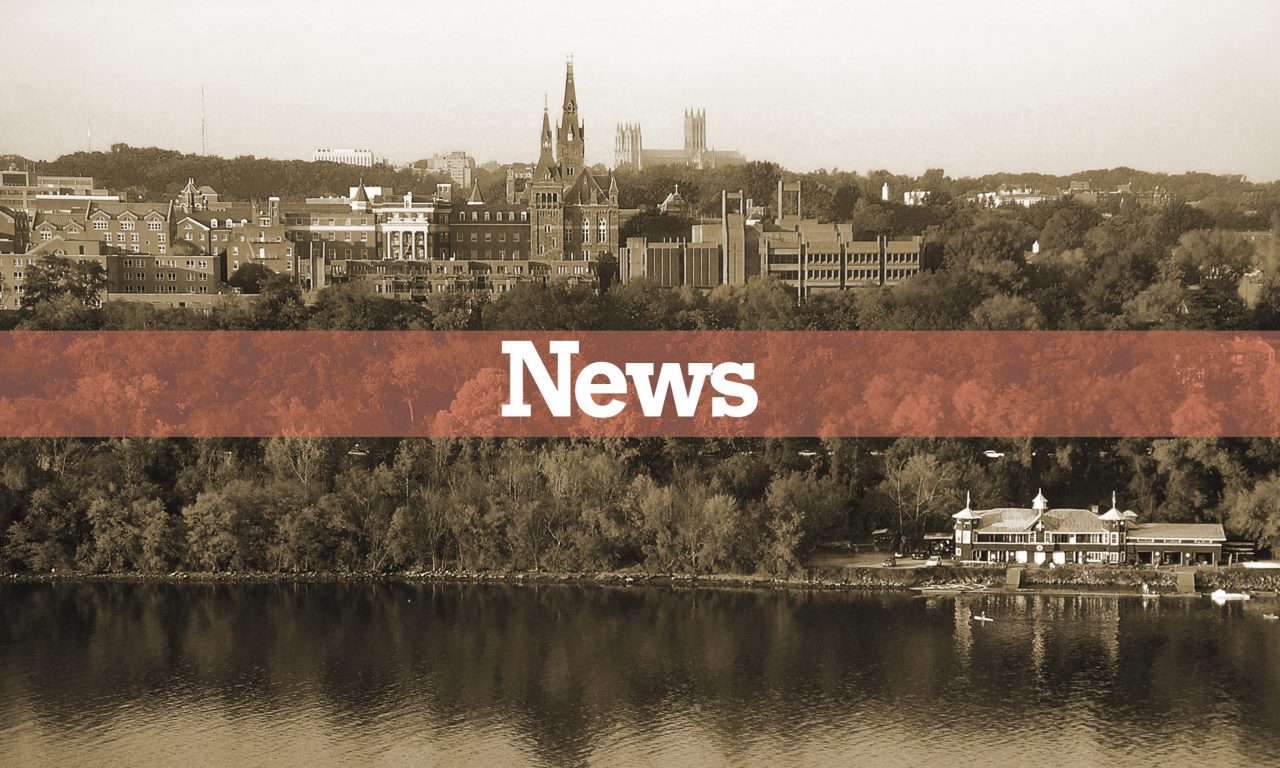Georgetown graduate students affiliated with the Potomac-Chesapeake Dolphin Project (PCDP) witnessed the birth of a wild bottlenose dolphin in the Potomac River, the third ever documented observation of such a birth and the first evidence of the Potomac as a breeding ground for dolphins.
The PCDP was initiated in 2015 by Georgetown biology professor and dolphin expert Janet Mann with the hopes of studying and protecting the wild bottlenose dolphins of the Potomac River and Chesapeake Bay. Mann created the project after spending more than three decades studying wild bottlenose dolphins in Australia.
While the birth this past August was a breakthrough discovery, dolphins in the Potomac is no new phenomenon.
“There are records of these dolphins in the Chesapeake Bay and the Potomac River that stretch back to at least the 1800s,” said Whitman Miller, a research scientist at the Marine Invasions Lab of the Smithsonian Environmental Research Center .
The presence of dolphins in the region could date back centuries. “I would suspect that dolphins likely occurred in the Bay prior to the 1800s, but without records, it is difficult to say,” Miller said.
Notably, dolphin sightings in the Chesapeake and Potomac have increased over the past few years, according to Helen Bailey of the Chesapeake Biological Laboratory of The University of Maryland Center for Environmental Science.
“Over 5,000 members of the public have been using our Chesapeake Dolphin Watch app to view and report dolphin sightings in the Chesapeake Bay,” Bailey said. “We had over 1,000 sightings reported last year.”
The high number of sightings are especially impressive considering the 2013-2015 cetacean morbillivirus outbreak among dolphins along the Atlantic coast that affected over 1,600 dolphins.
Although questions remain as to why and how the dolphins are in the Potomac in the first place.
“We know very little about what dolphins are doing in the Potomac/Chesapeake and where they go when they’re not here,” Melissa Collier, a second year doctoral student in Georgetown’s Biology Department collaborating with the PCDP, wrote in an email to the Voice.
Miller theorized that improved water quality could be the explanation. “One hypothesis for why more dolphins are being seen in the Bay and its tributaries is that water quality has improved markedly since passage of the Clean Water Act in 1972,” Miller said.
As the Potomac is the Chesapeake Bay’s second largest tributary, Miller’s observation highlights how drastically its water quality has improved since President Lyndon B. Johnson called the river “a national disgrace” in 1965.
Scientific hypotheses aside, both researchers and the general public are delighted by this seminal discovery.
“It’s wonderful that this live birth was witnessed in the Potomac River as it such a rare event to see,” said Bailey.
The PCDP team that witnessed the birth named the mother dolphin after the late Patsy Mink, a former congresswoman from Hawaii, and the calf after her daughter Gwendolyn, an independent scholar who writes about U.S. equality law, poverty policy, and gender issues.
This follows in the project’s tradition of naming discovered dolphins after prominent U.S. political figures, with previous names being ranging from Ben Franklin to Sandra Day O’Connor.
“Our dolphin watchers often ask if the Bay serves as a nursery area and it is exciting to have proof that this area is indeed a place where bottlenose dolphins are having their young,” said Bailey.
And even though witnessing a live birth was a thrilling moment for the PCDP, Collier stressed, “every day of research and data collection is exciting because we are learning something new about this understudied group of animals.”
Eleanor Miskovsky contributed to this report.




